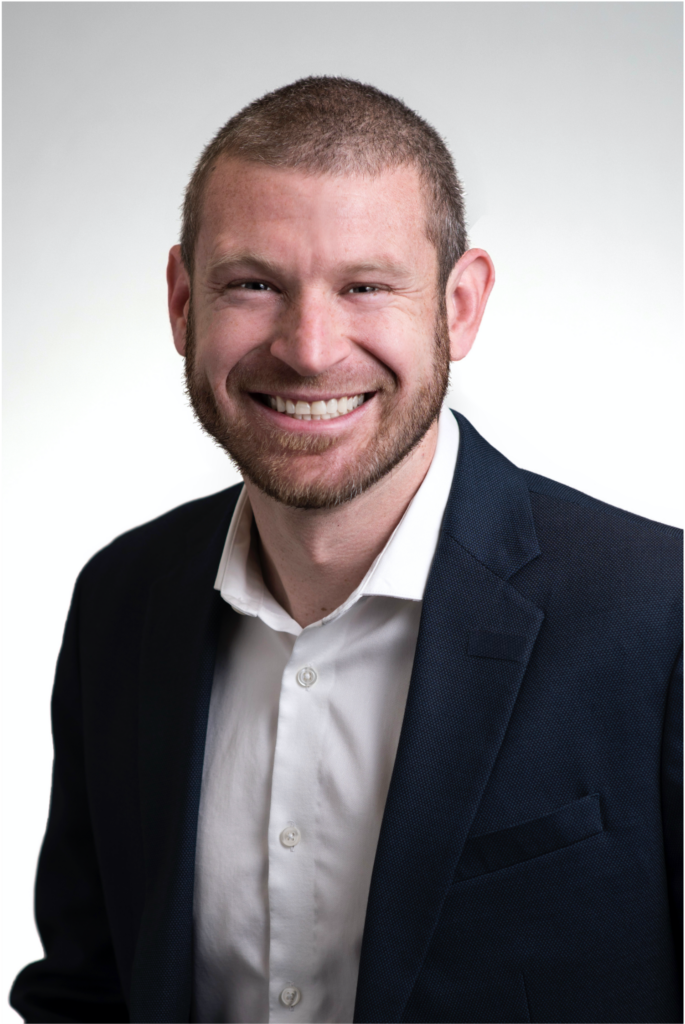Breakthrough T1D strives to accelerate life-changing breakthroughs to cure, prevent, and better treat type 1 diabetes (T1D) and its complications. To accomplish these goals, we use a multi-pronged strategic approach, including conducting scientific studies and educating our community. In line with these goals, Breakthrough T1D recently published two peer-reviewed journal articles. One detailed burdensome unmet needs in the T1D community and identified key steps we can take to meet these needs. The other used real-world data to better understand American T1D demographics and predict changes in the next decade.
Let’s take a deeper dive into each.

Unmet needs of the T1D community: More work is needed
This article, titled “The Urgent Need for Breakthrough Therapies and a World Without Type 1 Diabetes”, was published as a commentary in Diabetes Therapy in early April 2025.
Key Takeaways
- Despite major progress in T1D management, T1D still results in premature death, complications, and very significant daily burden.
- Daily insulin use is a persistent challenge that comes with physical, emotional, social, and economic burdens.
- New therapies and cures that can reduce or eliminate the challenges of living with T1D are closer than ever.
- The entire T1D community (researchers, sponsors, clinicians, advocates, people with T1D, regulators) needs to work together to overcome scientific, drug development, and regulatory challenges to make cures for T1D a reality.
About the publication
This commentary reviews previously existing data across the T1D care spectrum to help demonstrate the magnitude and significance of the unmet needs faced by people living with T1D. This information is used to emphasize the urgency researchers, sponsors, and regulators must place on developing cures for T1D. The authors provide recommendations and actionable steps to overcome scientific, clinical, and regulatory challenges that will help meet these needs.
Daily life with T1D is still a challenge
To say that the daily routine of people living with T1D is hard would be an understatement.
Insulin injections and dosage calculations. Wearable tech maintenance. Carbohydrate counting. Mealtime and exercise tracking. Doctor’s appointments. Hypoglycemia, hyperglycemia, and diabetic ketoacidosis (DKA) avoidance. It requires constant attention: 24 hours a day, 7 days a week.
The truth of the matter is that T1D management is a burdensome, demanding, and highly intensive task. There are no breaks, vacations, or time off—even overnight, it requires management. These challenges remain, even with today’s advancements in technology and the emergence of novel therapies for T1D. Simply put, we need to do more for the T1D community, and we cannot settle for the status quo.
The bigger picture
The global burden of T1D
-
11
- The average number of years of life lost for people with T1D globally.
-
21%
- The percent decrease in mortality rate for people with T1D in the last 30 years globally, which is not distributed equally among everyone with T1D.
The challenge of day-to-day T1D management compounds into long-term negative outcomes for the T1D population. Despite improvements in mortality rate, the life expectancy of people with T1D is still shorter than those without T1D.
Keeping blood glucose in a normal range is extremely difficult, and people with T1D need to be acutely aware of their insulin doses to prevent highs (hyperglycemia) and lows (hypoglycemia). Prolonged hyperglycemia leads to heart, kidney, and eye damage. Hypoglycemia can be very dangerous and a source of distress and anxiety, especially if it occurs often and eventually without symptoms (termed “hypoglycemia unawareness”).
The impact of hypoglycemia
-
25-40%
- Percent of people with T1D who experience hypoglycemia unawareness.
-
30%
- Percent of adults with T1D who have a fear of hypoglycemia.
Current technologies cannot solve the problem of hypoglycemia or make people with T1D have perfect blood sugar levels. As a whole, these challenges represent a profound emotional and mental burden for people with T1D, often leading to diabetes distress and burnout—which itself can lead to worse glycemic control. People with T1D have a tougher time managing the ins and outs of daily life because of the extreme mental and physical load of having T1D.
A longer life on its own is not the goal: it’s longer lives without ever having to think about T1D.
Breakthrough T1D’s vision for the future…
Breakthrough T1D envisions a world where the burden of T1D no longer exists. A world where people don’t have to manage their diabetes—they don’t take insulin, don’t have blood sugar highs and lows, and don’t develop complications. Curing T1D is our north star.

…and how to make it a reality
To achieve these goals, we need widespread screening, innovative research and therapies, patient-centered clinical approaches, and evolved regulatory pathways. We need to adjust the T1D paradigm and move clinical testing along at a quicker pace.
The regulatory route for new therapies determines whether companies, which have the greatest ability perform research in a quick and efficient manner, will invest their time and money into innovative T1D therapies. They are more encouraged to do so if they see defined and reasonable pathways for new therapies to reach the market—especially if healthcare systems are in place that will allow these therapies to be adopted by healthcare professionals and used by the people who need them most.
It starts with the decision-makers, who weigh the benefits versus risks of a new therapy. These decisions need to have more input from people who have a lived experience with T1D and can better decide if the benefits outweigh the risks, especially given the tremendous daily burden of living it. Clinical testing should broaden to include more populations of people with T1D—not just those who have severe disease—because nearly everyone has the chance to benefit. As the authors state in the commentary:
The magnitude of benefits required to outweigh a product’s risks should be determined by people living with T1D and no one else.
To further optimize T1D clinical trials, Breakthrough T1D and other experts have pushed for the validation of C-peptide, a biomarker for the body’s insulin production, as a clinical trial endpoint. Compared to the currently used endpoints, C-peptide would provide easier assessments and shorter clinical timeframes, thereby making the process of T1D therapy development more streamlined—and bringing these data to decision-makers sooner.
Once better clinical endpoints are validated, more personal experiences are incorporated into clinical trials, and the regulatory path to market is clear, companies will be encouraged to invest in T1D research programs, thereby speeding up research, innovation, and progress along the clinical pipeline—getting life-changing therapies into the hands people with T1D faster than ever.
What comes next?
This publication will be shared broadly with regulators, legislators, payers, and the T1D research community to encourage research, innovation, and funding and advocate for quicker, more efficient clinical testing and regulatory pathways to approval.

I think the misperception that the therapies available today are good enough is one of the most insidious challenges to ushering in the era of T1D cures…Today’s therapies do not offer the freedom from diabetes that people living with the disease want…I believe when we fully appreciate the daily experiences of people living with T1D, and when we use these experiences to guide our research development and regulatory decisions, we will also then have clear pathways for new therapies that meet these needs.”
This is a call to action for everyone working in the T1D space. The overarching purpose is to foster awareness of these unmet needs and the urgency with which we must act as a community to address them—by working together and collaborating across the pipeline of T1D management.
Read on to learn more about the population of people living with T1D with these unmet needs.

T1D demographics: From today to 2033
This article, titled “We Are on the Verge of Breakthrough Cures for Type 1 Diabetes, but Who Are the 2 Million Americans Who Have It?”, was published in the Journal of Health Economics and Outcomes Research in November 2024.
Key Takeaways
- T1D is common in adults as well as children.
- Nearly 47% of Americans with T1D are enrolled in commercial health insurance followed by nearly 30% in Medicare, and 15% in Medicaid.
- People with T1D who use diabetes devices have lower mortality rates than those who do not.
- Most Americans living with T1D today are Non-Hispanic White people.
- In the next 10 years, the Hispanic and African American populations with T1D are expected to grow the most, and the average age will increase from 47 to 49 years old.
About the study
The purpose of this study was to identify key T1D demographics in the United States and predict how these demographics will change over the next decade. Using healthcare insurance claim datasets, population growth projections, and existing literature, the authors modeled T1D demographic changes between 2024 and 2033.
This study was funded by Breakthrough T1D in collaboration with the T1D Index team so that these data can be incorporated into the Index. (Disclaimer: the T1D index uses multiple datasets and publications to predict the number of people living with T1D, which may explain discrepancies in Index estimates and predictions from this study).

Incidence
The number of new T1D diagnoses in a given time period.
Prevalence
The total number of people with T1D (new and existing diagnoses) in a given time period.
T1D stats: Now
2.07 million
Number of people in the U.S. living with T1D.
47
Average age of people living with T1D.
67%
Percent of people with T1D who are 20–64 years old.
19%
Percent of people with T1D who are over 65 years old.
47%
Percent of people with T1D who have commercial health insurance plans. Other coverage includes Medicare (30%) and Medicaid (15%).
T1D stats: 10 years from now
2.29 million
Number of people in the U.S. living with T1D (due to increase in T1D incidence and improved survival from devices).
49
Average age of people living with T1D.
33%
Percent increase in T1D population that aged 65 and older (mostly due to aging of the current T1D population).
38%
Percent increase in T1D population that is aged 10 and younger.
44%
Percent of people with T1D who have private/commercial health insurance plans. Other coverage includes Medicare (30%) and Medicaid (17.4%).
30%
Percent increase in T1D population who will use Medicaid.
What comes next?
Despite significant advances in T1D technology, therapies, and care management, the T1D population still faces a greater risk of complications and a higher mortality rate. Breakthrough T1D leadership will use key information from this study to inform future strategic research and advocacy efforts.

This data gives us an opportunity to quantify key information about our community to inform decision-makers…With better data specific to those with T1D, we can ensure that we’re advocating for solutions that not only expand access but also promote a better health care system for those with T1D.”
These data will help inform elected officials and payers about how healthcare policies may ultimately affect the T1D community—ensuring that the policies in place are having the greatest impact they can. The next phase of the project will analyze key demographic information in the context of access to cell therapies.
The ultimate goal is to ensure that everyone with T1D has access to the therapies, technology, and care that works best for them. By understanding T1D population demographics, Breakthrough T1D can make the most informed decisions possible as we move toward our goal of a world without T1D. We call on regulators, legislators, payers, and T1D researchers to take urgent action to meet the unmet needs of the T1D community now and in the future.